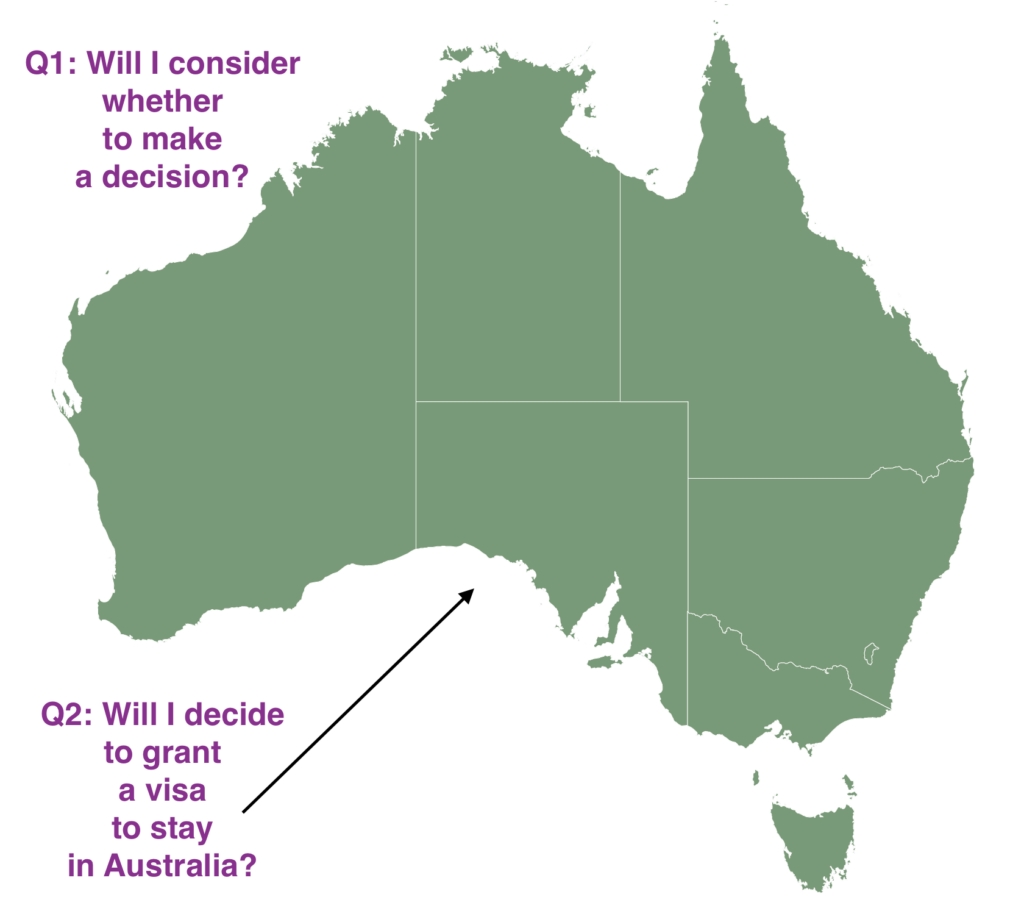The High Court finds a ‘double’ decision-making power in Davis v Minister for Immigration. Can we learn something about how to identify decisions more easily from this case?

It is common for government officials to ‘skip over’ important decision-making powers in legislation, with the result that they ignore them. This can happen when there are two decisions rolled up into one statutory provision.
This is a very dangerous practice.
The risks of such an approach include failure to exercise a statutory power properly, lawfully, or at all. We might not realise that the provision contains statutory power. We might not realise that a person requires a ‘delegation’ in order to make a decision under that provision.
Why do administrators miss the existence of double decision-making powers?
In my view, people do not understand how to identify all types of decision-making powers or functions. They do not realise when Parliament requires the existence of a ‘decision-maker’ in a statutory provision. This is a question of statutory interpretation, which can require training and practice.
Davis v Minister for Immigration
In the case of Davis v Minister for Immigration, Citizenship, Migrant Services and Multicultural Affairs [2020] HCA 10, the High Court analysed one statutory provision with two decision-making powers. That is, the High Court found that two decision-making powers existed within the one provision.
The Court in Davis handed down the decision on 12 April 2023. It found that s 351(1) of the Migration Act 1958 (Cth) (the Act), contained two distinct decisions. Delegation of these decisions was not possible. (That was because the Act itself provided that the powers ‘may only be exercised by the Minister personally’.)
But the Minister had attempted to delegate one of those decision-making powers to departmental officers in a set of Ministerial Instructions. The High Court said this was unlawful.
Could it be that the Minister did not realise that there were two distinct decisions in the Act? Perhaps the writers of the Ministerial Instructions did not realise this either?
The situation arises when a tribunal refuses to grant a visa to a person. That person might subsequently ask the Minister to grant a visa. Here are the two distinct decisions that the Minister might make, as identified by the High Court:
- a decision to consider whether to make a decision; and
- a decision whether to grant a visa if the Minister thinks it is in the public interest to do so.
The High Court said that each decision was ‘a discretional value judgment’ with respect to ‘undefined factual matters’ (para [14]).
But the Act did not call them two decisions. It simply said: ‘If the Minister thinks that it is in the public interest to do so, the Minister may substitute for a decision of the Tribunal… another… more favourable (decision)’ (s 351(1)).
The Instructions overlooked the dual decisions
The Ministerial Instructions were issued to departmental staff. The Instructions did not have the same authority as the Act. They tried to enable departmental officers to decide the first matter, ie ‘whether to make a decision’. It worked as follows. After a tribunal refused a visa, a person may apply to have a visa granted by the Minister. Officers then assessed, as instructed, whether a case had “unique or exceptional circumstances”. If it did not, then the officer was not to refer the request to the Minister.
This case throws up another common problem for government administrators – the problem of relying on policy, procedural, or instructional documents to trump an Act. Clearly, many decision-makers had applied the Ministerial Instructions prior to the Davis case. I wonder if any of the decision-makers asked themselves whether they were unlawfully attempting to exercise a decision-making power which the Act reserved for the Minister alone?
PS There are issues in this case to do with executive power, the Constitution, the Carltona principle, and the fact that this statutory provision was a limitation on executive power. This affected the delegation question in the case. However, for this note I focus only on the two decision-making powers which were identified by the High Court in s 351(1).